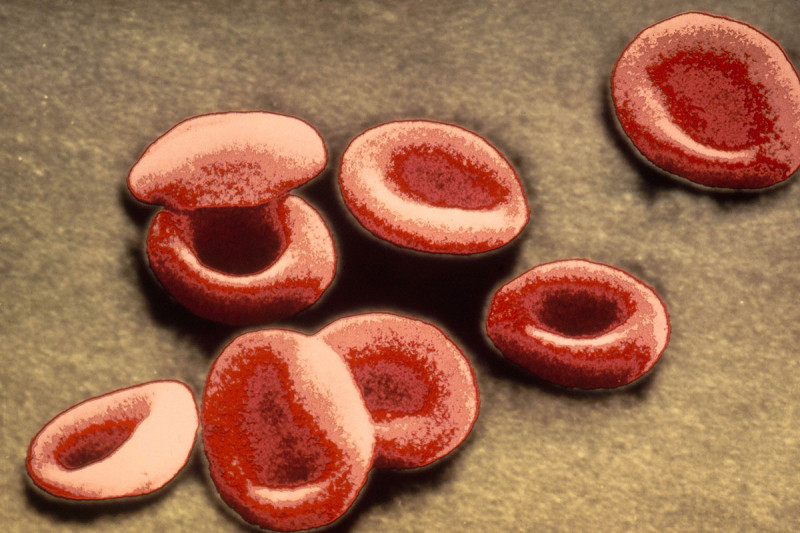
A decline in the production of red blood cells can lead to anemia. Credit: Bill Longcore/Science Source
Anemia, a condition in which there are not enough red blood cells to transport oxygen throughout the body, affects millions in the United States every year. It can lead to fatigue, dizziness, and shortness of breath, among other symptoms. It’s a common side effect of certain cancer treatments, especially chemotherapy. Anemia occurs frequently in people with a type of blood cancer called myelodysplastic syndrome (MDS). And it’s widespread among people over age 65.
Therapies for anemia exist. They include the drug epoetin alfa (Procrit®, Epogen®), regular blood transfusions, and iron supplements. But researchers continue to be on the lookout for additional and better ways to boost the production of red blood cells. MSK physician-scientist Omar Abdel-Wahab, an expert in MDS, recently published a study in Science Translational Medicine that reported a new approach for treating anemia with medication.
“Anemia is a major medical problem,” says Dr. Abdel-Wahab, whose lab is part of MSK’s Human Oncology and Pathogenesis Program. “This study suggests a new type of drug that we could use to treat it. While the current standard therapies for anemia are very helpful, many people eventually fail to respond to these treatments. Additionally, routine use of blood transfusions has a major negative impact on quality of life and comes with potential side effects. Thus, developing entirely new ways to treat anemia is incredibly important.”
A Different Role for a Known Pathway
The new method was identified through a collaboration between Dr. Abdel-Wahab and Lingbo Zhang, a researcher at Cold Spring Harbor Laboratory and co-senior author of the paper.
The researchers performed a high-throughput screen, in which hundreds or thousands of compounds are tested at the same time. They were hoping to find drugs that could boost the production of red blood cells. They tested the compounds in cell cultures of red blood cell precursors (a type of blood stem cell that has the ability to develop into red blood cells).
They discovered that compounds that block a pathway called CHRM4 increased the production of red blood cells. This pathway is also known to have a regulatory effect on neurotransmitters, such as serotonin and dopamine. Its role in the production of red blood cells had not previously been identified.
After identifying the role of the CHRM4 pathway by studying blood cells in a test tube, the investigators analyzed the effects of giving the compounds to mice with MDS and in bone marrow samples from people with MDS. They also tried them in elderly mice that had reduced red blood cell production because of their age. (In mice, elderly means about 2 years old.) In each case, the drugs boosted the numbers of red blood cells that were made.
Identifying a Novel Therapeutic Approach
Drugs that block the CHRM4 pathway have already been approved by the US Food and Drug Administration to treat certain neurological disorders. The researchers are hoping to use these drugs as a starting point to make new medications that are more effective at treating anemia.
“These drugs don’t seem to have many side effects,” Dr. Abdel-Wahab says. “We think this is a good path to pursue.”
He adds that targeting CHRM4 could also be a good approach for treating hemolysis. This condition occurs when red blood cells break open and release hemoglobin into the blood. Hemolysis can happen in response to infections or drug reactions, among other situations, and can lead to anemia.






